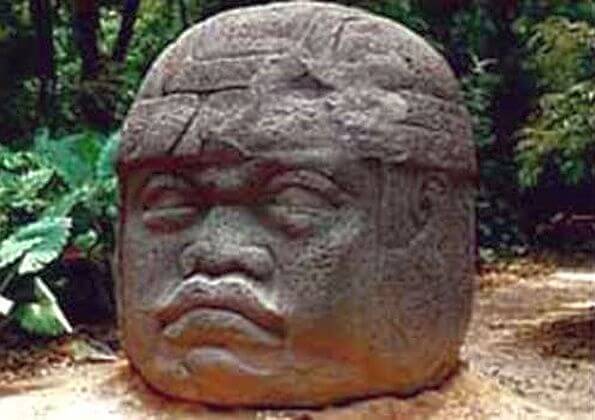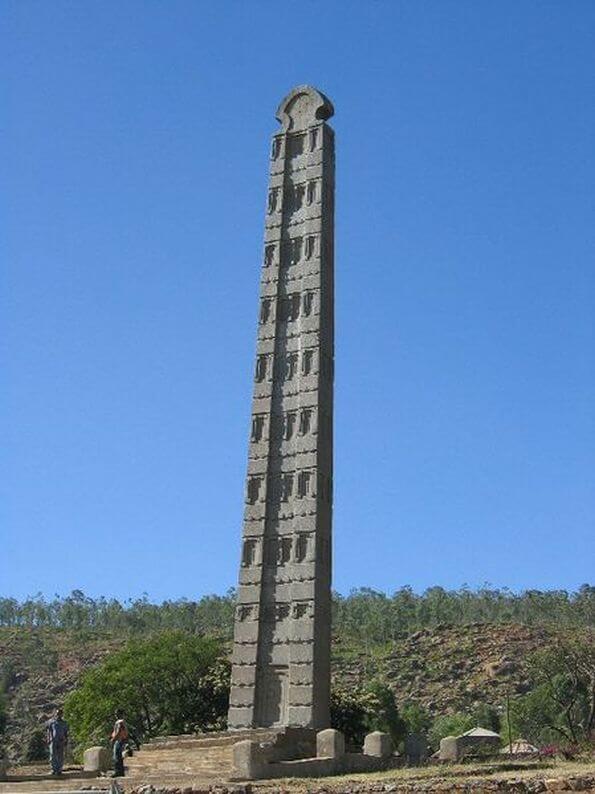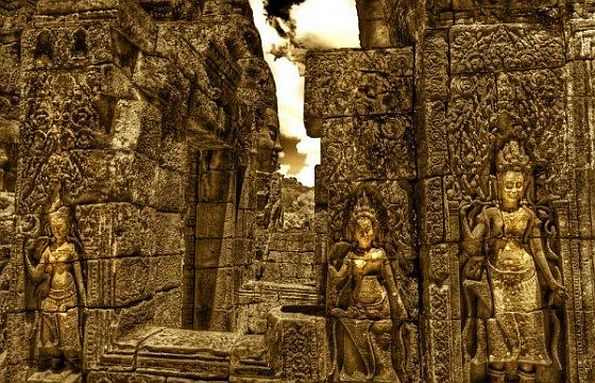– Throughout our history, most civilizations have either met a slow demise or were wiped out by natural disasters or invasion. But there are a few societies whose disappearance has scholars truly stumped:
10. The Olmec

One of the first Mesoamerican societies, the Olmec inhabited the tropical lowlands of south-central Mexico. The first signs of the Olmec are around 1400 BC in the city of San Lorenzo, the main Olmec settlement which was supported by two other centers, Tenochtitlan and Potrero Nuevo. The Olmec were master builders with each of the major sites containing ceremonial courts, house mounds, large conical pyramids and stone monuments including the colossal head that they are most known for. The Olmec civilization relied heavily on trade, both between different Olmec regions and with other Mesoamerican societies. Because they were one of the earliest and most advanced Mesoamerican cultures at the time, they are often considered the mother culture of many other Mesoamerican cultures.
Where did they go?
Around 400 BC the eastern half of the Olmec’s lands was depopulated- possibly due to environmental changes. They may have also relocated after volcanic activity in the area. Another popular theory is that they were invaded, but no one knows whom the invaders might be.
9. The Nabateans

The Nabateans were a Semitic culture that inhabited parts of Jordan, Canaan and Arabia from around the sixth century BC. They are most widely known as the builders of the city of Petra, which served as their capital. Petra is an impressive city carved out of the cliff side with the crown jewel being the Khazneh, or Treasury, a giant Greek inspired building. The Nabateans’ wealth was gained by being a major stop on a complex trading network, through which they traded ivory, silk, spices, precious metals, gems, incense, sugar perfume and medicine. Because of the extent of the trade route, the Nabatean culture was highly influenced by Hellenistic Greece, Rome, Arabia and Assyria. Unlike other societies of their time, there was no slavery and every member of society contributed in the work duties.
Where did they go?
During the fourth century AD, the Nabateans abandoned Petra and no one really knows why. Archeological evidence proves that their exodus was an organized one that was unrushed, which leads us to believe that they were not driven out of Petra by another culture. The most likely explanation is that when the trade routes they relied on moved north they could no longer sustain their civilization and left Petra behind.
8. The Aksumite Empire

The Aksumite Empire began in the first century AD in what is now Ethiopia and is believed to be the home of the Queen of Sheba. Aksum was a major trade center with exports of ivory, agricultural resources and gold being traded throughout the Red Sea trade network and onward to the Roman Empire and east towards India. Because of this, Aksum was a very wealthy society and was the first African culture to issue its own coinage, which in ancient times was a sign of great importance. The most recognizable monuments of Aksum are the stelae, giant carved obelisks that acted as the grave markers of kings and nobles. Early Aksumites worshipped several gods but their main god was called Astar. In 324 AD, King Ezana II was converted to Christianity and from then on Aksum was a zealously Christian culture, and is even allegedly the home of the Ark of the Covenant.
Where did they go?
According to local legend, a Jewish Queen named Yodit defeated the Aksumite Empire and burned its churches and literature. However, others believe that southern pagan queen Bani al-Hamwiyah led to the Aksumite decline. Other theories include climate change, trade isolation and over farming leading to starvation.
7.The Mycenaeans

Growing out of the Minoan civilization, the Myceanaeans merged around 1600 BC in southern Greece. Being spread out over two islands and the southern mainland, the Myceaneans built and invaded many major cities like Mycenae, Tiryns, Pylos, Athens, Thebes, Orchomenus, Iolkos and Knossos. Many Greek myths are centered around Mycenae including the legend of King Agamemnon, who led the Greek forces during the Trojan War. The Myceaneans were a dominant naval power and used their naval prowess for trade with other nations as well as for military endeavors. Because of a lack of natural resources, the Myceaneans imported many goods and turned them into sellable items and therefore became master craftsmen, known throughout the Aegean for their weapons and jewelry.
Where did they go?
No one knows for sure, but one theory is that unrest between the peasant class and the ruling class led to the end of the Myceaneans. Other point to disruptions in trade routes, or natural factors like earthquakes. But the most popular theory is that they were invaded by a civilization from the north like the Dorians (who settled in the area after the fall of the Myceaneans) or the Sea People (who at the time were migrating from the Balkans to the Middle East).
6. The Khmer Empire

The Khmer Empire grew out of the kingdom of Chenla in what is now Cambodia around the 9th century AD and became one of the most powerful empires in Southeast Asia. The empire is known to most people as the civilization that built Angkor, Cambodia’s capital city. The Khmer were an incredibly powerful and wealthy culture who were open to several belief systems including Hinduism, Mahayana Buddhism and Theravada Buddhism, which were the empire’s official religions. Their power also included military might as they fought many wars against the Annamese and Chams. Continue reading . . .
SF Source TopTenz April 2015
